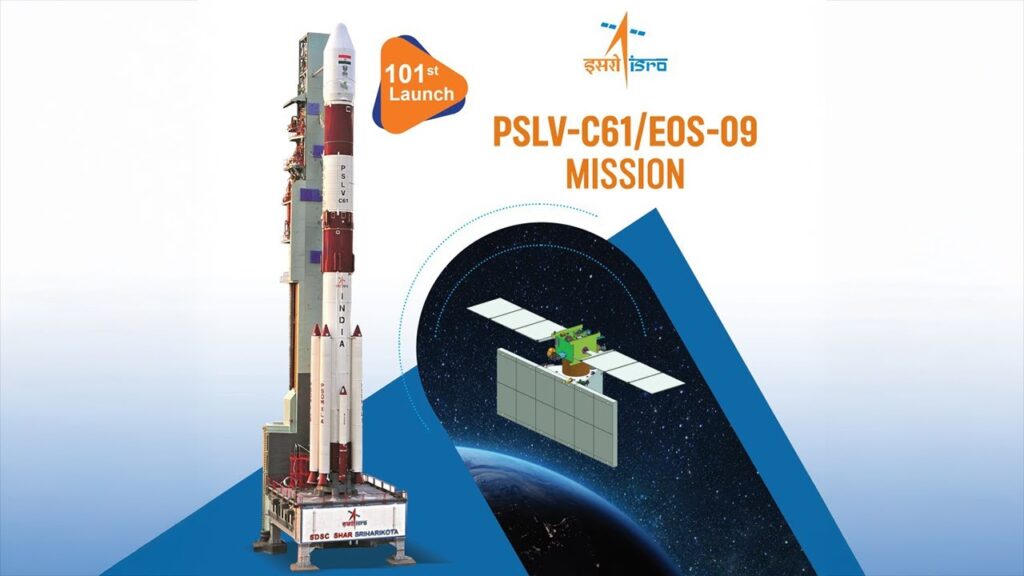Astrobotic Technology is an aerospace and robotics company based in Pittsburgh Pennsylvania, U.S. Founded in 2007, the privately held company is developing technology for the next phase of humankind’s exploration of space, particularly for missions to the moon and to other planets.
The company, created by Carnegie Mellon University professor and robotics expert Red Whittaker and his associates, aims to help other developers get their technology into space.
“We’re empowering a thriving human presence in space to explore the universe beyond Earth orbit. We believe in the elegant, pragmatic use of robotics to make space accessible to the world,” Astrobotic Technology writes on its official website (opens in new tab). “We specialize in making space missions feasible and more affordable for science, exploration, and commerce. And we think the moon is a great place to start.”
Related: NASA’s Artemis program: Everything you need to know
NASA certainly has faith in Astrobotic’s commitment to space research. In 2008, the U.S. space agency funded a concept study from the company, and a year later granted Astrobotics $795,000 USD to investigate prospecting for lunar resources. In 2010, NASA signed several contracts with Astrobotic with a value of up to $30 million USD.
The NASA collaborations have continued at a steady pace since, with one of the most significant developments being Astrobotic’s successful bid for NASA‘s Commercial Lunar Payload Services to deliver science and technology payloads to the moon resulting in a $79.5 million contract.
This isn’t the limit of Astrobotic’s collaboration, and one contract, in particular, may be one of the strangest collaborations in science history. In January 2021, YouTuber MrBeast (opens in new tab) arranged with Astrobotic to send a hard drive containing digital files submitted by viewers who paid $10 to his online store into space.
Shoot for the moon: Griffin and Peregrine lunar landers

(opens in new tab)
The mission of Astrobotic Technology began with the development of a lunar lander initially called Red Rover in 2007. Shortly after the construction of the first prototype, the mission was renamed Griffin.
A medium-class lander, the aluminum frame of Griffin is equipped with flexible mounting options that allow it to carry a range of rovers and other payloads to the lunar surface or to orbit around the moon.
Ensuring these payloads make it to the moon safely, the 14.8 feet-wide (4.5 meters) and 6.6 feet-tall (2 meters) Griffin also features an autonomous sensor system. The Optical Precision Autonomous Landing (OPAL) Sensor allows Griffin to make a precise landing even on the rugged and hazardous lunar terrain. Once on the surface, the lander features a range of ramps that can be equipped to allow rovers to safely disembark from their ride.
Griffin has a payload capacity (opens in new tab) of around 1,102 pounds (500 kilograms) with a trip to the lunar surface costing $1.2 million per 2.2 lbs (1 kg) while carrying a payload to orbit costs $300,000 per 2.2 lbs (1 kg).
In addition to Griffin, Astrobotic Technology has another smaller lunar landing that will be able to send technology to the surface of the moon.
The company’s small-scale Griffin lander redesign is called Peregrine and is targeted to become both the first commercial mission to the moon and also the first U.S. mission to make it to the lunar surface since Apollo 17 in 1972.
Measuring around 8.2 feet (2.5 meters) by 6.2 feet (1.9 m), Peregrine can hold cargo above and below its decks, which can be reconfigured depending on the cargo. Despite its smaller stature, this rover is also capable of hauling other rovers to the moon, which can roll out from the underside of its deck after touchdown.
The Peregrine Lander is capable of carrying 265 lbs (120 kg) into space and will also cost prospective users $1.2 million per 2.2 lbs (1 kg) to get cargo to the moon’s surface, with a trip to orbit costing $300,000 per 2.2 lbs (1 kg).
Arguably the most crucial part of both the Peregrine Lander and its big sister’s lunar mission is their landing.
Griffin and Peregrine moon landing logistics

(opens in new tab)
Both landers use what Astrobotic Technology calls “next generation space engine technology,” with the larger Griffin using seven main engines to perform its major maneuvers, while Peregrine has five.
These engines guide the landers through the landing process of trans-lunar injection, trajectory correction, lunar orbit insertion, and then powered descent, as detailed in Astrobotic’s payload user’s guide (opens in new tab). Following this, four clusters of attitude control thrusters or each lander maintain their orientation for the final approach to the lunar surface. A steady touchdown regardless of surface conditions is then ensured by Peregrine and Griffin’s four shock-absorbing legs.
The Peregrine lander is expected to journey to the moon at some point in 2023 and is expected to carry with it around 11 NASA payloads. Meanwhile, Griffin has been selected as the lander that will deliver NASA’s Volatiles Investigating Polar Exploration Rover (VIPER) to the lunar south pole in 2024.
Astrobotic Technology isn’t just helping other space outfits and agencies explore the lunar surface, however. The company intends to do so moon roving of its own.
The moon and beyond: What is the CubeRover planetary rover?
Astrobotic Technology’s CubeRover is a modular lunar rover that comes in three different sizes.
The size of the payloads these rovers can haul follows the same standards used for tiny satellites called cubesats. According to NASA (opens in new tab), these standards use set units with one unit (1U) being a 4-inch cube (10cm by 10cm by 10cm) that weighs 3 lbs (1.33 kgs) or less.
The CubeRovers designed by Astrobotic Technology have the following payload sizes:
| Payload size | Dimensions (inches) | Dimensions (centimeters) |
| 1U | 4 x 4 x 4 | 10 x 10 x 10 |
| 2U | 7.8 x 4 x 4 | 20 x 10 x 10 |
| 4U | 7.8 x 7.8 x 4 | 20 x 20 x 10 |
| 6U | 11.8 x 7.8 x 4 | 30 x 20 x 10 |
Astrobotic Technology has put its CubeRovers through extensive testing in environments that both simulate lunar dust and the moon’s rocky terrain.
This testing revealed the CubeRover has a maximum speed of around four inches per second (10 centimeters per second) or about one mile every four hours. The rover is capable of climbing slopes with an inclination of 30 degrees and climbing over obstacles that are smaller than six inches (15 cm) in diameter
Each of the rover’s four wheels is fitted with dust covers and seals that protect the wheels from fine lunar dust that could prevent them from working at maximum efficiency or could stall the wheels entirely.
Aiding navigation across the moon is the CubeRovers’ wide-angle front and rear cameras which allow a bi-directional view of the lunar surface while payload managers plan maneuvers from Earth with custom mapping and visualization software tools.
The journey of these rovers isn’t completely in the hands of human beings, however. Using built-in safeguards, the CubeRovers can return to their last known locations if they encounter unusual conditions or lose contact with Earth.
More upcoming Astrobotic Technology missions

(opens in new tab)
When it comes to performing operations on the moon, Astrobotic Technology’s Polaris Rover could be the rover of choice for science teams.
The rover with a 198 lb (90 kg) capacity could accommodate a range of equipment from drills up to 4 feet (1.2 m) in size to excavators and robotic arms. Depending on what missions these science payloads are tasked with and how they need to be deployed, they can be stowed above or below deck on the Polaris rover.
According to Astrobotic Technology (opens in new tab), Polaris will search for water at the poles of the moon as well as hunt for oxygen, methane, and other volatiles which could be useful for a sustained presence on the lunar surface and even for creating rocket fuel that could allow the moon to be used as stepping stone for deeper solar system locations.
The 5.5 ft (1.7 m) tall, 7 ft (2.2 m) wide, and almost eight-foot-long (2.4 m) rover that weighs in at around 330 lbs (136 kgs) is capable of moving at around one foot per second (0.3 m per second) across the lunar surface.
Smaller than Polaris is Astrobotics suitcase-sized MoonRanger micro-rover, set to explore the lunar south pole. The autonomous rover will build 3D maps of the lunar surface while granting insight into how moon dust and dirt affect small-scale motors.
“MoonRanger is a leap in planetary rover autonomy and miniaturization. As the first micro-rover, it is laying the tracks for the exploration of worlds beyond in the decades to come,” Red Whittaker said in a 2021 statement. (opens in new tab) “MoonRanger is the manifestation of our longstanding vision that robots have an immense future in space and that small is the next big thing.”
MoonRanger is set to be delivered to the moon as part of NASA’s Commercial Lunar Payload Services (CLPS) program in 2023.
In addition to these machines, Astrobotic Technology is working on a range of technology to be implemented everywhere from machines at the lunar surface to orbits around the moon and aboard the International Space Station (ISS).
From sensors for precision landings and hazard detection, to compact smart cameras like the UltraNav, and to AstroNav software that allows for multi-sensory robotic navigation and mapping, Astrobotic technology has many applications.
This means that even if space enthusiasts aren’t already aware of Astrobotic Technology there is a good chance they know about a mission that will utilize its tech.
Additional resources
Astrobotic Technologies’ landers and rovers all form part of the continued push to send humans back to the moon, more sustained space missions, and eventually a journey to Mars. All of this is encapsulated by the Artemis mission. Read about the future of space exploration here in our Artemis program guide. Want to immortalize your keepsake on the moon? Astrobotic is accepting small mementos for missions (opens in new tab) to the lunar surface. Check out their website to find out more.
Bibliography
Astrobotic, [Accessed 12/18/22], [https://www.astrobotic.com/ (opens in new tab)]
Space Robotics, [Accessed 12/18/22], [https://www.astrobotic.com/lunar-delivery/space-tech/ (opens in new tab)]
ASTROBOTIC LUNAR LANDERS, Payload User’s Guide, [Accessed 12/18/22] [https://www.astrobotic.com/wp-content/uploads/2022/01/PUGLanders_011222.pdf (opens in new tab)]
Landers, Astrobotic, [Accessed 12/18/22], [https://www.astrobotic.com/lunar-delivery/landers/ (opens in new tab)]


